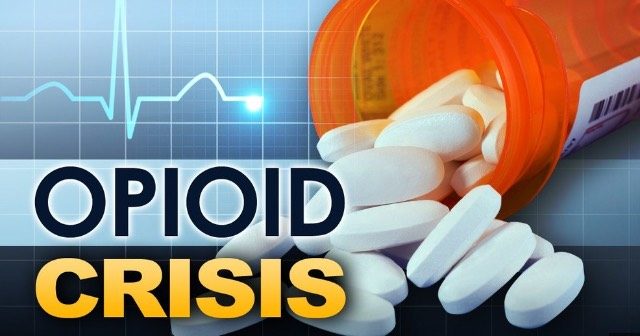At the beginning of 2018, it was estimated that about one in every 65 deaths is related to opioid overdoses, states Ashwood Recovery. The opioid crisis started to develop a decade earlier. In the 1990’s, people were assured that pain relievers containing opioids were non-addictive, resulting in a higher amount of these drugs being prescribed to the public. However, this information was incorrect, and when pharmaceutical companies began to realize that opioids were very addictive, it was already too late. Opioid medications were all over the nation and were being abused by many.
Lawson Jolly, director of Counseling Services at Saint Leo University, believes there are many factors to the current opioid crisis.
“Drug abuse and addictions have existed always, and often there is a shift in the most used or most damaging substance. In the 90’s, medical practitioners saw a shift in an expectation to treat pain more aggressively, and prescriptions rose. It is well-documented the highly addictive nature of opioids, as well as the centers that were established as pill mills that heightened the availability in the community,” said Jolly.
There are positive benefits, such as getting them through very painful experiences. However, there has also been a lot of negative outcomes as a result of these drugs becoming reliable and addictive to some. For many, these painkillers kill not only physical pain but also emotional pain; therefore, once patients began noticing they could kill two birds with one stone, they began to get addicted and couldn’t stop. These abuses of the medications were unforeseen and have affected millions of people in the United States. There are about two million people who are suffering from opioid drug addiction. Jolly also added that these drugs were given to a broader number of the population from their physicians for their pain management, and a large number of these people are victims of getting addicted who would normally not engage in drug abuse.
National Safety Council states that in 2016, over 42,000 Americans died of an opioid overdose. This number was the highest yet and shows that over the past few years the opioid crisis has begun to worsen in America. In 2017, the U.S. Department of Health and Human Services (HHS) announced that there is officially an opioid crisis, and they also announced that they have a five-point strategy to help combat the issue.

Counseling services are very welcoming to all campus students who are need of their help. There are several councelsors who are available by appointment. An appointment can be made by calling or going to the office directly opposite to 121 in D’Chantel.
Victoria Cavillo
“I am encouraged with the declaration of national attention and focus. With 42,000 deaths in 2016 related to opioid use, it should be treated as a health emergency. It is solvable,” stated Jolly.
The HHS’s five priorities begin with improving access to treatment and recovery services. This means that there is going to be more access for those who need treatment for their addiction. There are many Americans who are addicted to opioids and several other drugs, who are not receiving treatment. In 2017, the HHS decided to send out letters to the governor of each state to announce they are going to give $485 million in grants for research on opioid prevention and treatment.
These grants will help provide financial help to state policies and practices for addiction treatments. They will also help prevention programs, health training professionals, technology investments and drug monitoring programs.
Jolly agreed that in order to combat the opioid crisis, there needs to be a multi-level step process in action. He believes it should involve easy access to expert treatment. Also, there should be investigations and strict regulations implemented into pharmaceuticals, insurance companies and the general medical industry. There should be extensive research into alternative non-addictive pain management.
Another point to the five-point strategy is public health surveillance and research. This means there will be even more information to the public and more research based on this epidemic.
There is a lot of communication involved to make this part work. Currently, the HHS communicates with public health and law enforcement to track development of overdoses. Customs and Border Protection are also working with the HHS to alert authorities if any of the Border Protection agents intercept any illegal shipments of possibly addictive medications, which would be sold and distributed if successful, in order to make authorities aware of possible, excessive overdoses.
Jolly also believes there should be a lot of communication involved.
“There should be exploration into the cultural beliefs and expectations about pain experiences, prevention campaigns across the lifespan related to opioid specifically as well as addictions in general, education focused on parenting and messages around pain and substances and aggressive enforcement of existing laws are all areas to be considered.”
Support for research for pain and addiction is another point; this is part of the funding that the grant will go toward. They are going to research if they can develop a new kind of painkiller that is safer and less addictive. The research will also go toward a possible vaccine to help prevent opioid addiction.
European Pharmacy mentions there are currently experimental vaccines to help reduce the effects of heroin, which has shown to be effective on mice and rats. The goal of the vaccine is to prevent the addictive drug from entering the bloodstream and negatively affecting the brain. The vaccine produces antibodies to fight against addictive, such as opioids. In its experimental stages, the vaccine has shown to lower effects of heroin at a dangerously high dose, which has helped reduce the possibility of an overdose.
Another point of the five-point strategy involved opioid overdose reversal drugs. There are drugs such as naloxone, which help reverse drug overdoses. This medicine has helped thousands of American each year with their severe addictions. The grant mentioned previously will also be utilized for these reversal drugs and make them more accessible to those with severe drug addictions such as opioids.

October is National Substance Abuse Month, and organizations such as the DLH are making it their mission to raise awareness of substance abuse, especially in this critical time of the opioid crisis.
@DLHCorp
An advancement of pain management is the last point of the HHS’s strategy. HHS mentions that everyone needs to remember that no true cure will prevent addiction to these drugs.
To stop opioid-related deaths and addiction, it is important to revisit what people use as pain management and not depend on them to be pain-free.
In relevance to Saint Leo University, college students are at risk of abusing drugs, such as opioids, due to school-work stress and other issues that may be going on in their lives. So, the question still stands: what can be done to help prevent students from becoming addicted to pain medications?
“Similar to alcohol and other addictive drugs, avoiding first use is the safest way to avoid any addiction or dependency. In regard to pain management or physician prescription, following doctor’s orders implicitly and possibly asking a friend or family member to monitor your use or keep you accountable could be helpful,” Jolly advised.
Jolly gave an anecdote of when he was offered possible pain medications after suffering from a fractured wrist and elbow. He refused to fill the prescription and managed his pain with less risky medications. He said he did this out of fear because he had seen many individuals in his life who were successful but became addicted to pain medications and quickly downward spiraled in life due to their choices concerning these medications. He chose to take an extreme route of not wanting to risk addiction from these drugs due to well-known complications.
Lawson Jolly has a message for all University Campus students:
“As always, counseling services are here to assist students with a variety of concerns. The most common issues in our center are anxiety, depression, substance use and relationship issues. Each year about one out of every four SLU students on our campus comes in for an appointment. We can assist with usage issues directly and also assist with involving students in 12-step or other groups, or more intensive treatment if needed. Services are free and confidential. Call 352-588-8199 for more info or to make an appointment.”





